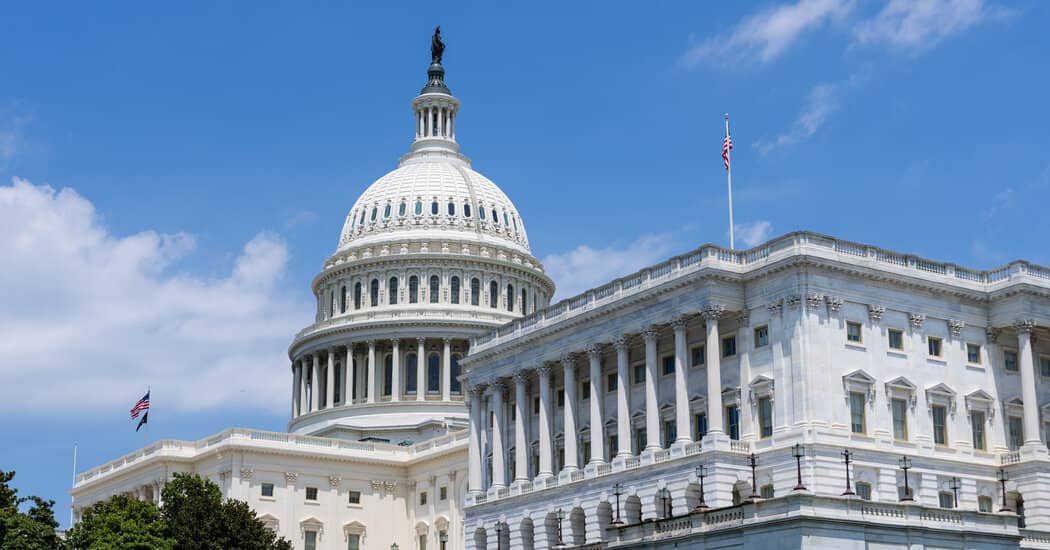Federal Reserve officials use government data to help determine when to raise or lower interest rates. Congress and the White House use it to decide when to extend jobless benefits or send out stimulus payments. Investors place billions of dollars worth of bets that are tied to monthly reports on job growth, inflation and retail sales.
But a new study says the integrity of that data is in increasing jeopardy.
The report, issued on Tuesday by the American Statistical Association, concludes that government statistics are reliable right now. But that could soon change, the study warns, citing factors including shrinking budgets, falling survey response rates and the potential for political interference.
The authors — statisticians from George Mason University, the Urban Institute and other institutions — likened the statistical system to physical infrastructure like highways and bridges: vital, but often ignored until something goes wrong.
“We do identify this sort of downward spiral as a threat, and that’s what we’re trying to counter,” said Nancy Potok, who served as chief statistician of the United States from 2017 to 2019 and was one of the report’s authors. “We’re not there yet, but if we don’t do something, that threat could become a reality, and in the not-too-distant future.”
The report, “The Nation’s Data at Risk,” highlights the threats facing statistics produced across the federal government, including data on education, health, crime and demographic trends.
But the risks to economic data are particularly notable because of the attention it receives from policymakers and investors. Most of that data is based on surveys of households or businesses. And response rates to government surveys have plummeted in recent years, as they have for private polls. The response rate to the Current Population Survey — the monthly survey of about 60,000 households that is the basis for the unemployment rate and other labor force statistics — has fallen to about 70 percent in recent months, from nearly 90 percent a decade ago.
“This is a slow-moving train wreck,” said Erica Groshen, who led the Bureau of Labor Statistics, part of the Labor Department, during the Obama administration.
The problem could be about to get worse. Faced with rising costs to conduct its surveys, and a budget that isn’t keeping up, the Bureau of Labor Statistics recently said it expected to cut the size of the Current Population Survey by about 5,000 households in the next fiscal year, which begins in October.
Response rates for other government surveys — including those used to produce data on wages, job openings and consumer expenditures — also fell precipitously during the pandemic and have recovered only partly, if at all. Statistical agencies in other countries are facing similar issues: The British Office of National Statistics last year temporarily suspended publication of data from its Labour Force Survey because of concerns over its reliability.
There is no evidence that U.S. economic data has faced a similar erosion in quality. Statistical agencies say they routinely review their data for evidence that falling response rates are leading to biased results and remain confident in their data — a conclusion backed by the American Statistical Association report.
But William Beach, who led the Bureau of Labor Statistics from 2019 to 2023, said the agency was nearing the point where it would no longer be able to publish reliable monthly data on employment and unemployment for smaller demographic groups, such as Asian Americans and teenagers, or for less populous states.
“That’s the first thing you’ll see in the future is less data being reported,” he said.
Representatives of the Bureau of Labor Statistics and the Census Bureau said they were confident of the reliability of their data. But they acknowledged that falling response rates posed a challenge.
“Issues like privacy concerns, challenges contacting respondents in cellphone-only households, and respondents’ availability when contact is made have all contributed to the decline,” Ron Jarmin, deputy director of the Census Bureau, said in a written statement. “We have been researching and testing ways to stabilize or reverse this trend, because a higher rate of response means higher-quality data.”
Statistical agencies and outside experts agree that federal statistics will ultimately need to incorporate more data from private sources and administrative records alongside traditional surveys. That process has already begun: The Census Bureau, for example, uses data from the private-sector aggregators Circana and Nielsen to supplement survey data for its monthly retail sales report.
But such an approach is resource intensive, requiring government statisticians to collect and verify outside data, figure out how to merge different sources, and test the resulting statistics to ensure their reliability — all while continuing to produce reports using traditional methods.
Resources for that kind of innovation have been scarce. Funding for the Bureau of Labor Statistics has fallen 18 percent in inflation-adjusted terms since 2009, the American Statistical Association report found. Other agencies have also seen their budgets decline, even as the cost of merely maintaining existing operations has risen.
“Agencies are tasked not only with producing this month or this quarter’s numbers but also with continuously modernizing so they don’t lose confidence and quality,” Ms. Groshen said. “But the history of underfunding for the past 20-some-odd years at least means that they have had less opportunity to do research and to advance modernization plans that they know are needed.”
The new report calls on Congress to provide more funding to the statistical agencies, to ensure the continued reliability of their existing data and so they can expand coverage of parts of the economy that aren’t well measured by traditional statistics. Existing employment data, for example, has struggled to capture the rise of gig work.
But funding is not the only challenge, the report’s authors stressed. They said Congress should also make it easier for agencies to share data with one another so that they can operate more efficiently. And they called for more explicit protections to keep statistical agencies free from political interference.
The independence of those agencies drew increased attention during the Trump administration, when the Commerce Department sought to add a question about citizenship to the 2020 census — a move that critics argued was intended to suppress responses in Democratic-leaning areas. (The Trump administration denied a political motivation.)
The Supreme Court ultimately blocked the effort, but the episode highlighted that there are few legal provisions ensuring that the statistical agencies can operate independently.
“The fact of the matter is, we’ve relied on norms for the autonomy of the statistical agencies, and sometimes norms are overturned,” Ms. Potok, one of the report’s authors, said. “That’s why we’re saying Congress needs to enact legislation to make this issue of professional autonomy statutory.”




